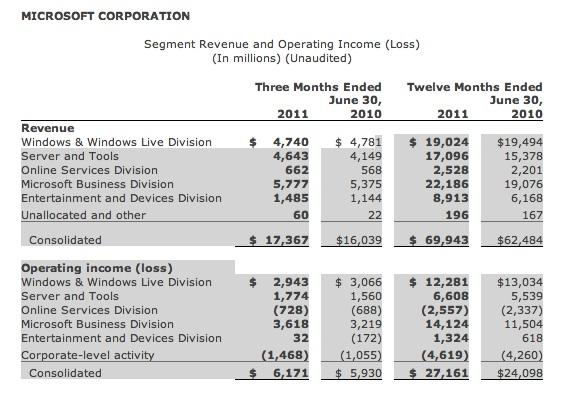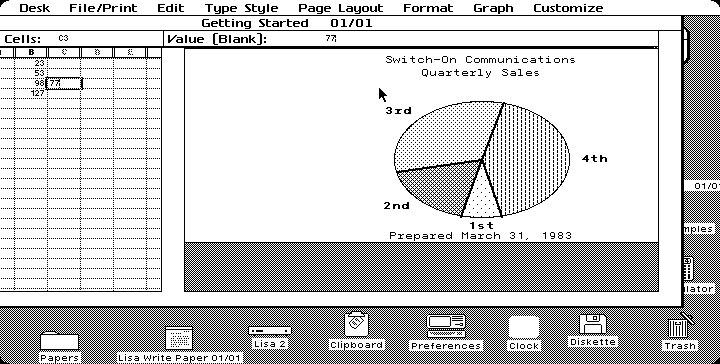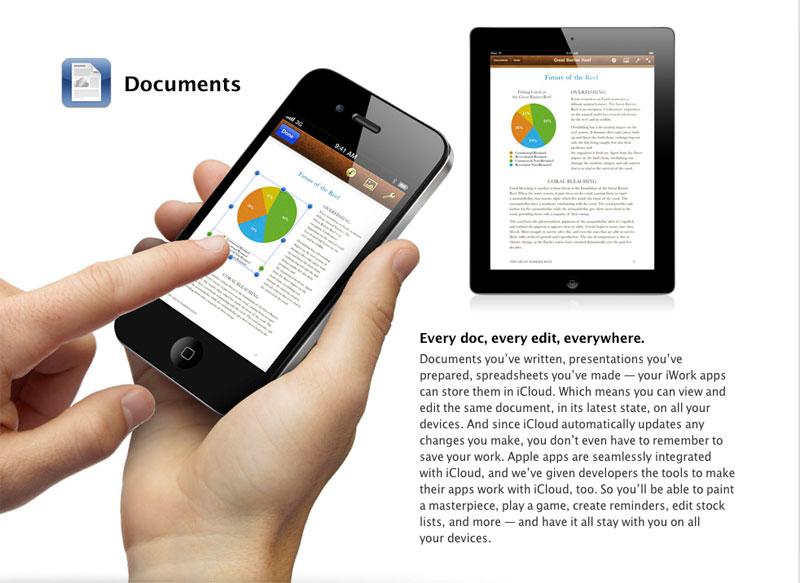Microsoft faces iPad, iWorks without articulated plan for Windows 8 Office
Microsoft has outlined plans to bring the iPad's exclusive App Store software model to Windows 8, at least for the new Zune-inspired Metro apps that Windows 8 tablets will run. However, it hasn't announced parallel plans to bring its own Office apps. Instead, the company has said only that it is still only thinking about its Office options in the tablet arena, despite revealing plans to get Windows 8 itself to market within a year.
Speaking with financial analysts, Microsoft's chief executive Steve Ballmer answered questions about a Metro Office release by saying, "you ought to expect that we are rethinking and working hard on what it would mean to do Office Metro style."
Ballmer then revealed that Microsoft was still in the early stages of exploring the concept by saying, "the question is Metro interface for Office. How critical is it to Windows 8 adoption to have software that takes full advantage of Office with Metro?â€
Office now more important to Microsoft than Windows
The lack of an articulated direction for Office on tablets is notable because many Windows enthusiast observers are hoping Windows 8 will do to the iPad in tablets what Windows 95 did to the original Macintosh in graphical desktops.
However, Office isn't just the icing on top of Microsoft's Windows cake. Microsoft's revenues from its Business Division (90 percent of which come from Office, according to the company) have now exceeded its Windows & Windows Live Division (representing desktop OS licensing). Office also earns Microsoft more profits than Windows.
Windows is also experiencing stagnating growth, while the company's Office revenues and profits continue to grow at a healthy pace. And while Microsoft has emphasized its Xbox 360, Kinect, Zune and similar consumer devices, its Office group makes more than 100 times the profits of its entire Entertainment and Devices Division. Office is currently Microsoft's biggest cash cow, and it has long been near the top.
Office was the reason for Windows
Office has long been a key pillar of Microsoft's business. In fact, Office wasn't created for Windows; Windows was created as a way for Microsoft to sell its successful Macintosh Office apps on the DOS PC.
The main attraction of the Windows PC was initially that it could run Excel, and later Word and PowerPoint, three apps Microsoft had created or acquired to build its Office suite on the Macintosh. Alternative PC operating systems, including IBM's OS/2, couldn't run the Mac's Office apps and Microsoft demonstrated no interest in porting Office to support alternative platforms it did not own.
At the same time, Microsoft had encouraged the developers of popular or even critical apps for DOS users, including Word Perfect and Lotus 1-2-3, to port their software to OS/2. When Microsoft subsequently abandoned its OS/2 partnership with IBM and began selling Windows on its own, it was also left with the only productivity apps available for Windows.
Microsoft subsequently co-marketed Windows 95 and its matching set of Office apps, almost instantly killing off rival desktop software and making Windows and Office paired standards for PC users. In the years since, Microsoft has deftly outpaced third party developers' attempts to bring Office competitors to Windows, even as it rolled new functionality into Office to take over new markets (such as messaging with Exchange Server and Outlook).
On page 2 of 3: Apple and Office, Beating Microsoft in Software.
While Apple's original graphical computer, the 1983 Lisa, was too expensive to reach the mass market, early reviewers were more impressed with its complete suite of productivity apps than they were with the system itself.
Lisa's bundled Office System software suite was criticized by developers as eating into their potential market. When it released the Macintosh, Apple was so worried about offending third party developers that it allowed them to deliver most of its software without any significant first party competition.
In fact, it was originally Steve Jobs who invited Microsoft to write its Office apps for the Macintosh, observing that Bill Gates' company was struggling to find a market for its Multiplan spreadsheet (a clone of VisiCalc) in the DOS PC world dominated by Lotus. Microsoft also began porting its MultiPlan Word software, based on the Bravo word processor from Xerox PARC, to the Mac.
After being renamed as Excel and Word on the Macintosh, Microsoft's apps began to take off. Apple's chief executive at the time, John Sculley, recently noted in a presentation that "Microsoft made more money on Microsoft Office per Macintosh than Apple made on the Macintosh."
In its battle with IBM's OS/2, Sculley explained that Microsoft was able to license Windows for cheaper because it was making its money on Office apps, which supported the development of Windows itself.
Beating Microsoft in Software
In the early 1990s, Apple briefly experimented once again with building its own productivity software for the Macintosh under a subsidiary named Claris.
Its flagship product, ClarisWorks, immediately became the most popular integrated office suite on the Mac, outselling Microsoft's Works in its first year. Claris even went to court to force Microsoft to remove advertising calling Works the "Best-Selling Integrated Application for the Macintosh," because it wasn't true anymore.
The beleaguered Apple subsequently allowed Claris to fall apart, and by the time Jobs returned to lead the company in 1997, very little of the subsidiary's software was deemed worthily of salvaging. Instead, Jobs started work on a series of new productivity apps that eventually became the iWorks suite: Keynote, Pages and Numbers. Apple used the suite to lessen the Mac platform's need for Office and to sharply lower the price Microsoft could charge for Office.
When it launched the iPad last year, Apple also launched mobile iOS versions of all three iWorks apps, which it later also brought to the iPhone. Apple's iWork apps have remained in the top ten highest grossing iPad apps since their release. However, Microsoft has been almost completely absent from the iOS market, offering only free OneNote and Messenger clients for the iPad related to its Office suite.
Without a significant application presence on iOS, Microsoft will be earning no external revenues to support touch-based productivity apps on Windows 8 in the way the massive revenues from Macintosh Office apps literally paid for the original development of Windows.
On page 3 of 3: Ribbon vs Metro, Apple's iPad look comes to the desktop and the cloud, Microsoft's mobile strategy for Office.
Last year, Microsoft released mobile Metro versions of Word, Excel, PowerPoint, OneNote and Outlook for Windows Phone 7, but those apps (which ship on every WP7 phone) haven't attracted significant interest in the company's mobile platform, even from enterprise users heavily invested in Office and Exchange Server.
And because the apps are bundled on WP7 phones, rather than being sold separately, they are earning Microsoft no additional revenues. The overall lack of interest demonstrated in Windows Phone 7 portends bad news for similar Metro-style Office apps on Windows 8 tablets, even if Microsoft does indeed decide to release a "Metro-fied" Office suite for tablets.
In addition, the company's efforts to make Office Ribbonized beginning with Windows Vista (largely a strategy to differentiate Office from free knockoffs such as StarOffice/OpenOffice) set the company's productivity apps in a completely different direction back in 2007 when Apple was preparing to launch iOS on the iPhone.
Apple's iPad look comes to the desktop and the cloud
Office users were just beginning to accept the new Ribbon interface (and Office for Mac users were just getting the first sight of the Ribbon) when Apple released its multitouch versions of iWork apps for iPad. Rather than putting more buttons and controls into a busy toolbar, Apple stripped complexity from the iWorks interface to make it more useful to mobile users. At the same time, Apple began work on iCloud, enabling iWork users on Macs and iOS devices to keep their document changes updated across all their devices.
When Microsoft debuts Windows 8 on new tablet devices sometime a year from now, it will need to bridge the chasm between its animated, Zune-like Metro interface and the complex Ribbon interface it uses on the conventional Windows desktop.
Apple has already released efforts to bridge the iPad and desktop interface with Mac OS X Lion, where apps such as Mail have inherited a very iPad-like experience. Forthcoming versions of iWork for the desktop are likely to similarly incorporate iPad elements. iCloud also brings an identical, cohesive interface to Apple's portfolio of web apps.
Microsoft's mobile strategy for Office
For years, Microsoft has taken a year or two longer to bring its Office for Windows updates to the Macintosh. After promising to bring its apps to Symbian in a high profile deal with Nokia back in 2009, Microsoft spent two years on the project. This suggests that the company will take more than a year to develop an entirely new Metro version of Office parallel to its planned release of Office 15 for desktop users.
With Apple's iWork apps now available from the Mac App Store for a total of $60, the potential market of Office for Mac is shrinking alongside the plateauing market for Windows PCs themselves. The cost of Office for Mac has imploded from its former $500 to a starting price now around $75.
Growth is occurring among mobile devices, primarily iOS and Android on smartphones and the iPad among a small minority of other tablets. Microsoft isn't selling its Office apps on any of those growing platforms. So far, it has only released significant portions of its Office suite for the stillborn WP7 and Nokia's left for dead Symbian platform.
Whether Microsoft can deliver Metro Office apps interesting enough to spur demand for Windows 8 tablets, or whether Windows 8 tablets will find a market without critical apps such as Office, are critically important issues Microsoft's chief executive leaves completely unanswered.
 Daniel Eran Dilger
Daniel Eran Dilger













 Mike Wuerthele
Mike Wuerthele

 Malcolm Owen
Malcolm Owen
 Chip Loder
Chip Loder

 William Gallagher
William Gallagher
 Christine McKee
Christine McKee
 Michael Stroup
Michael Stroup






